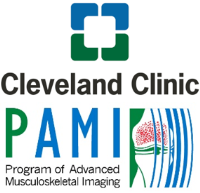Jeehun Kim1,2, Qi Peng3, Can Wu4,5, and Xiaojuan Li1,6
1Department of Biomedical Engineering, Program of Advanced Musculoskeletal Imaging (PAMI), Cleveland Clinic, Cleveland, OH, United States, 2Case Western Reserve University, Cleveland, OH, United States, 3Department of Radiology, Albert Einstein College of Medicine and Montefiore Medical Center, Bronx, NY, United States, 4Department of Medical Physics, Memorial Sloan Kettering Cancer Center, New York, NY, United States, 5Philips Healthcare, Andover, MA, United States, 6Department of Diagnostic Radiology, Cleveland Clinic, Cleveland, OH, United States
1Department of Biomedical Engineering, Program of Advanced Musculoskeletal Imaging (PAMI), Cleveland Clinic, Cleveland, OH, United States, 2Case Western Reserve University, Cleveland, OH, United States, 3Department of Radiology, Albert Einstein College of Medicine and Montefiore Medical Center, Bronx, NY, United States, 4Department of Medical Physics, Memorial Sloan Kettering Cancer Center, New York, NY, United States, 5Philips Healthcare, Andover, MA, United States, 6Department of Diagnostic Radiology, Cleveland Clinic, Cleveland, OH, United States
Six T1ρ preparation schemes were evaluated with ±250 Hz B0 inhomogeneity, and 1, 0.9, and
0.8 nominal B1 inhomogeneity in phantoms and volunteers at 3T and 7T. The
optimal prep scheme was identified regarding T1ρ quantification and image artifacts.

Figure 4 Volunteer
scan results from 7T. a) shows the nominal B1 map, and b) shows the B0
inhomogeneity map. As expected for 7T scanner, the B0 inhomogeneity was much
more severe compared to 3T. c) shows the NRMSE after fitting the echoes. Red
arrows indicate the area with large inhomogeneity. Similar to the previous results, Prep6 yields the best result.

